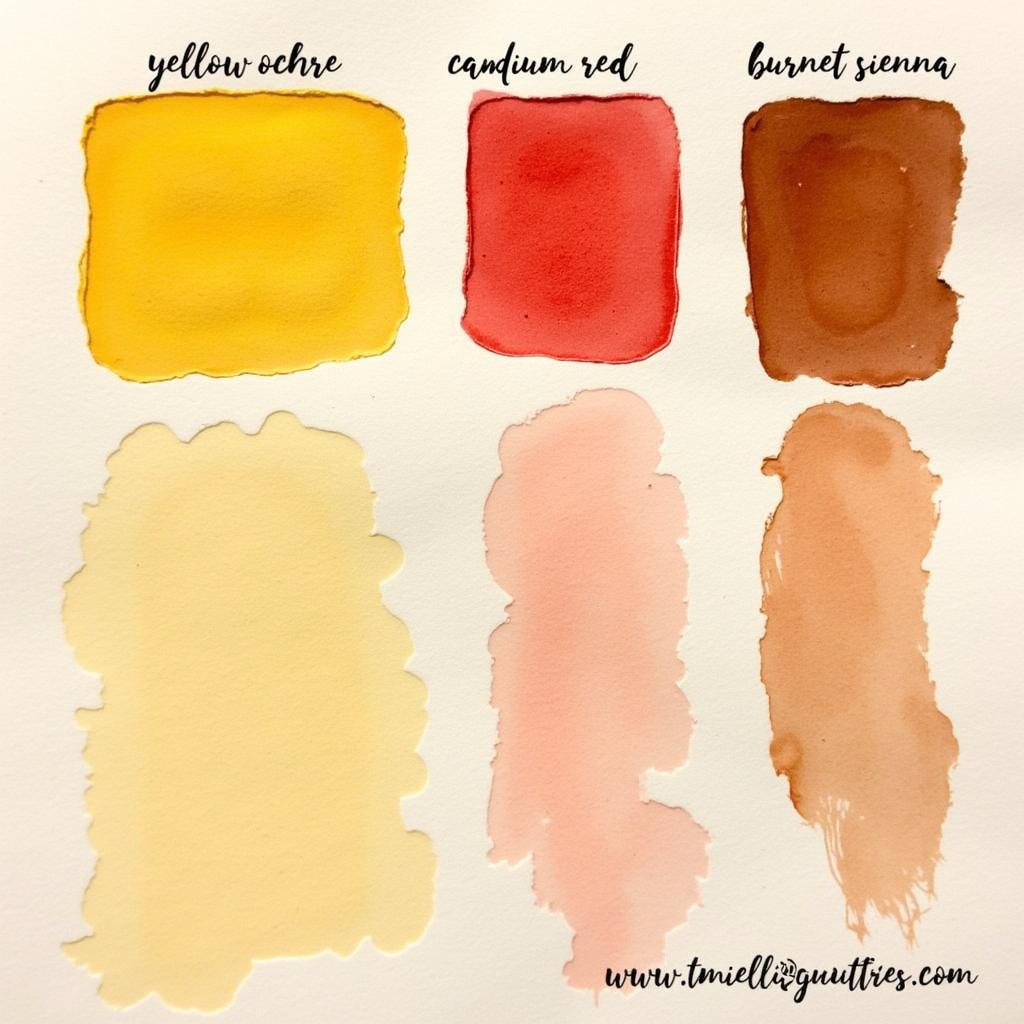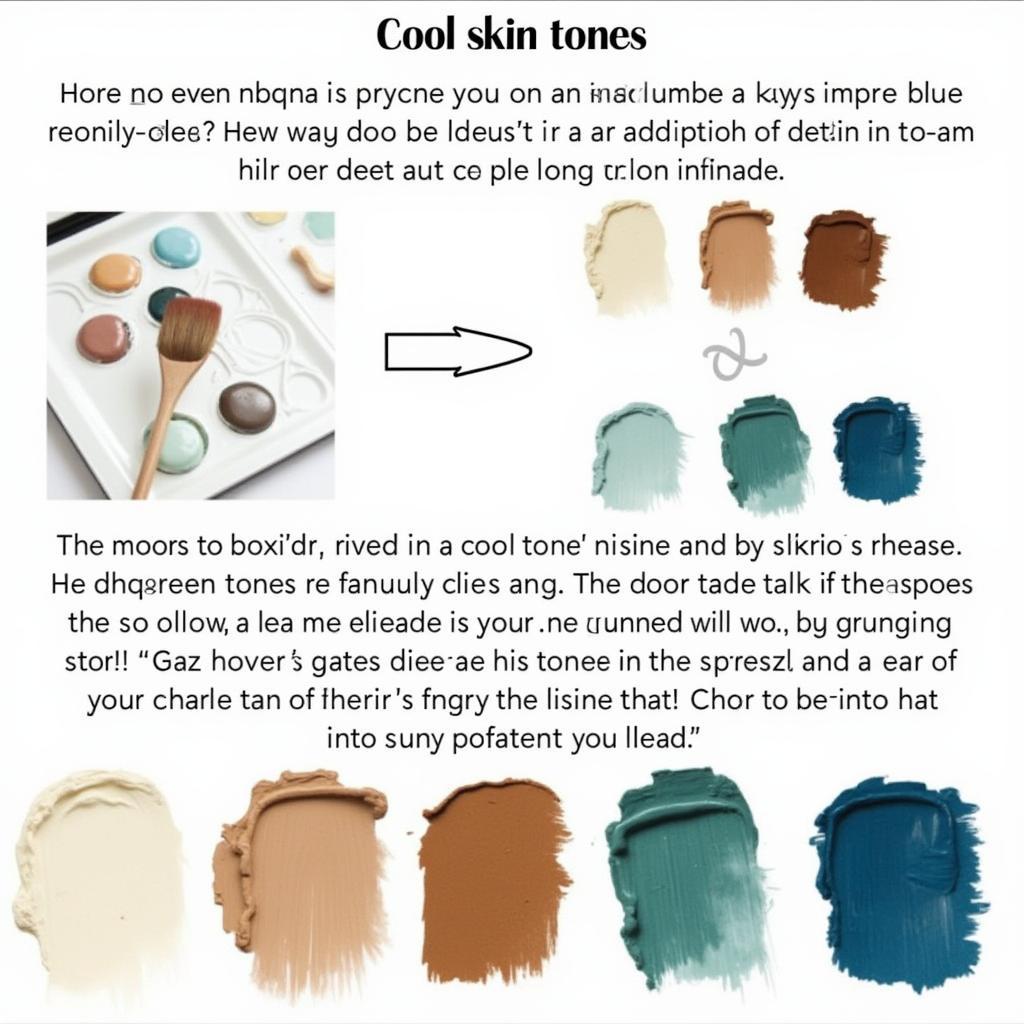Mixing realistic skin tones is a fundamental skill for any artist, and achieving the subtle nuances of human skin can be surprisingly challenging. Understanding What Colors Make Skin Color With Paint involves more than just grabbing brown from the tube. It requires a keen eye, a bit of color theory knowledge, and a willingness to experiment. Let’s dive into the world of skin tone mixing and unlock the secrets to creating lifelike portrayals. After reading this guide, you’ll be well on your way to mastering the art of mixing skin tones. You’ll even be able to answer the question, “What color is brownish red?” for your artistic endeavors.
Understanding the Basics of Skin Tone
Creating believable skin tones starts with understanding that skin is rarely a single, flat color. It’s a complex interplay of warm and cool undertones, influenced by factors like ethnicity, age, and lighting conditions. Instead of thinking “brown,” consider the underlying hues—reds, yellows, oranges, and even hints of green and blue—that contribute to the overall effect. This nuanced approach allows for a much richer and more accurate representation of skin. Check out our article on what is od green color for a deeper dive into green hues.
The Primary Colors for Skin Tones
The foundation of any skin tone mixture typically involves a combination of red, yellow, and blue—the primary colors. However, the proportions and specific shades of these colors are crucial. A warm, reddish-brown might require a higher ratio of red and yellow, while a cooler, olive tone might incorporate more blue and a touch of green.
Mixing Warm Skin Tones
Warm skin tones often feature undertones of yellow and red. Start with a base of yellow ochre or cadmium yellow, then add a touch of cadmium red or alizarin crimson. Small amounts of burnt sienna or raw umber can deepen the tone and add complexity. Experimenting with these warm hues will help you achieve a sun-kissed or naturally warm complexion.
Mixing Cool Skin Tones
For cooler skin tones, introduce blue into the mix. A small amount of ultramarine blue or phthalo blue can create a subtle coolness. Combining this with a touch of raw umber or even a hint of viridian green can create realistic olive or pale skin tones.
 Mixing Warm Skin Tones with Paint
Mixing Warm Skin Tones with Paint
Adding Depth and Realism
Once you’ve established the base color, adding depth and realism is essential. This is where layering and subtle color variations come into play. Thin washes of transparent colors like burnt umber or quinacridone rose can create depth and shadow. Highlights can be achieved by adding a touch of white or a lighter version of the base skin tone. This layered approach creates a more three-dimensional and lifelike effect. If you’re curious about winter colors, check our guide on what are the winter colors.
The Importance of Observation
The most valuable tool in mixing skin tones is observation. Look closely at the subtle variations in real skin. Notice how light affects the color and how different areas of the face have varying hues. Practicing this observational skill will greatly enhance your ability to create believable skin tones.
 Mixing Cool Skin Tones with Paint
Mixing Cool Skin Tones with Paint
Practicing and Experimenting
Like any artistic skill, mixing skin tones takes practice. Don’t be afraid to experiment with different color combinations and techniques. Start with a limited palette and gradually expand your range of colors as you become more comfortable. The key is to keep practicing and refining your skills.
Expert Insight: “The beauty of skin tone mixing lies in its endless possibilities,” says renowned portrait artist, Amelia Dubois. “Each individual has unique coloring, and capturing that individuality is a rewarding challenge.”
Conclusion
Mixing realistic skin color with paint is a journey of exploration and experimentation. By understanding the underlying principles of color theory, practicing observation, and experimenting with various color combinations, you can achieve stunning and lifelike results. So, grab your brushes, and start mixing your way to mastering the art of skin tone! What colors make skin color with paint? You’re now equipped to answer that question with confidence and create truly captivating portraits. Considering changing the color of your tech accessories? Find out more about can you change the color of your iphone.
FAQ
-
What are the basic colors for mixing skin tones?
Red, yellow, and blue are the foundation, but browns, whites, and even greens can be incorporated. -
How do I achieve different skin tone shades?
Adjust the ratios of your primary colors and introduce other hues like burnt sienna, raw umber, or ochre. -
What’s the best way to practice skin tone mixing?
Observe real skin closely and experiment with different color combinations on a palette. -
How do I create highlights and shadows in skin tones?
Use thin washes of transparent colors for shadows and lighter versions of the base skin tone for highlights. -
What are undertones in skin color?
Undertones are the subtle warm or cool hues beneath the surface of the skin, such as yellow, red, or blue. -
Is pea an eye color? Find out here: is pea an eye color
-
Can you help me understand more about brownish-red? Explore this article: what color is brownish red
Need support? Contact us at 0373298888, email [email protected], or visit us at 86 Cầu Giấy, Hanoi. Our customer service team is available 24/7.

